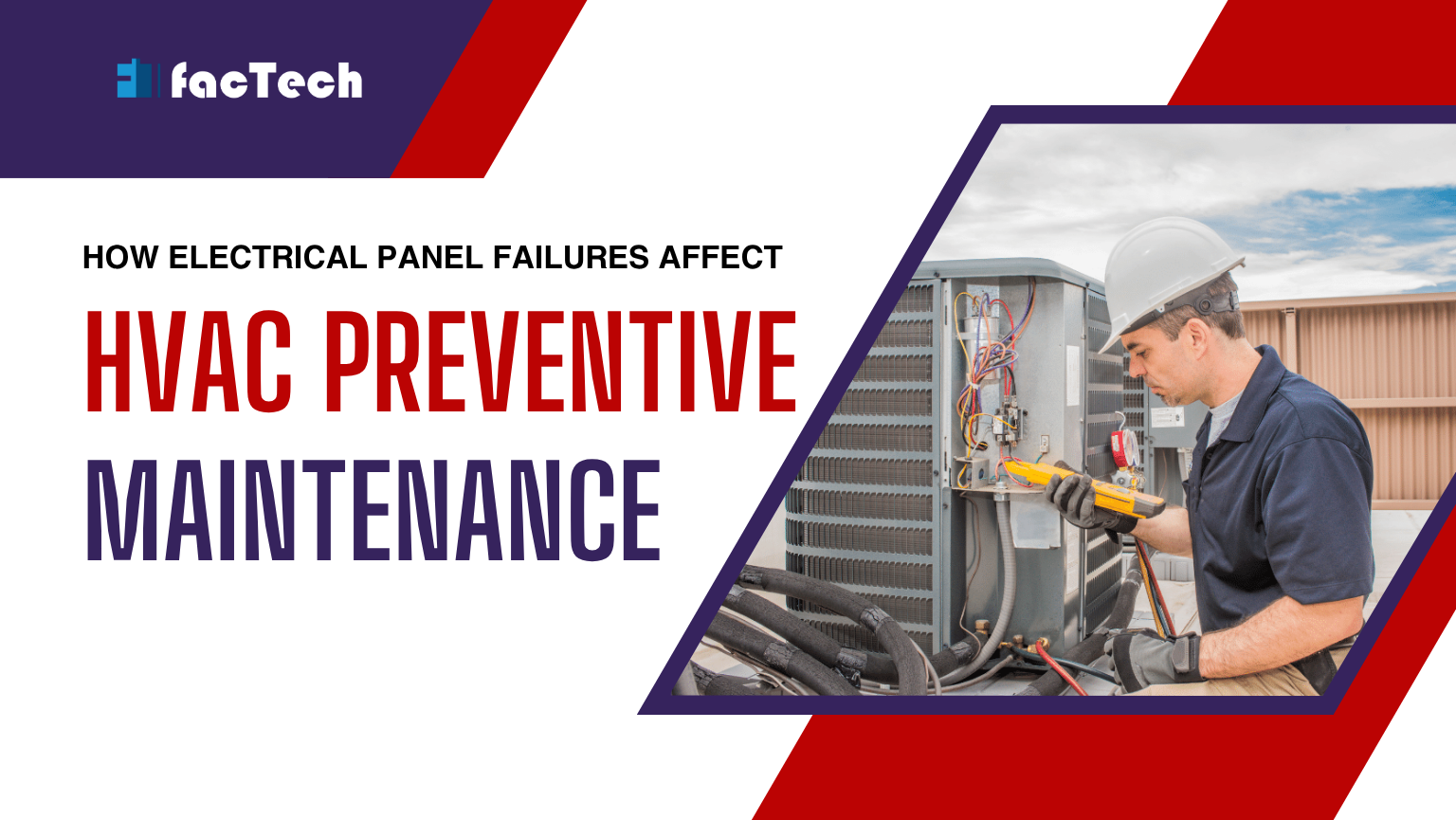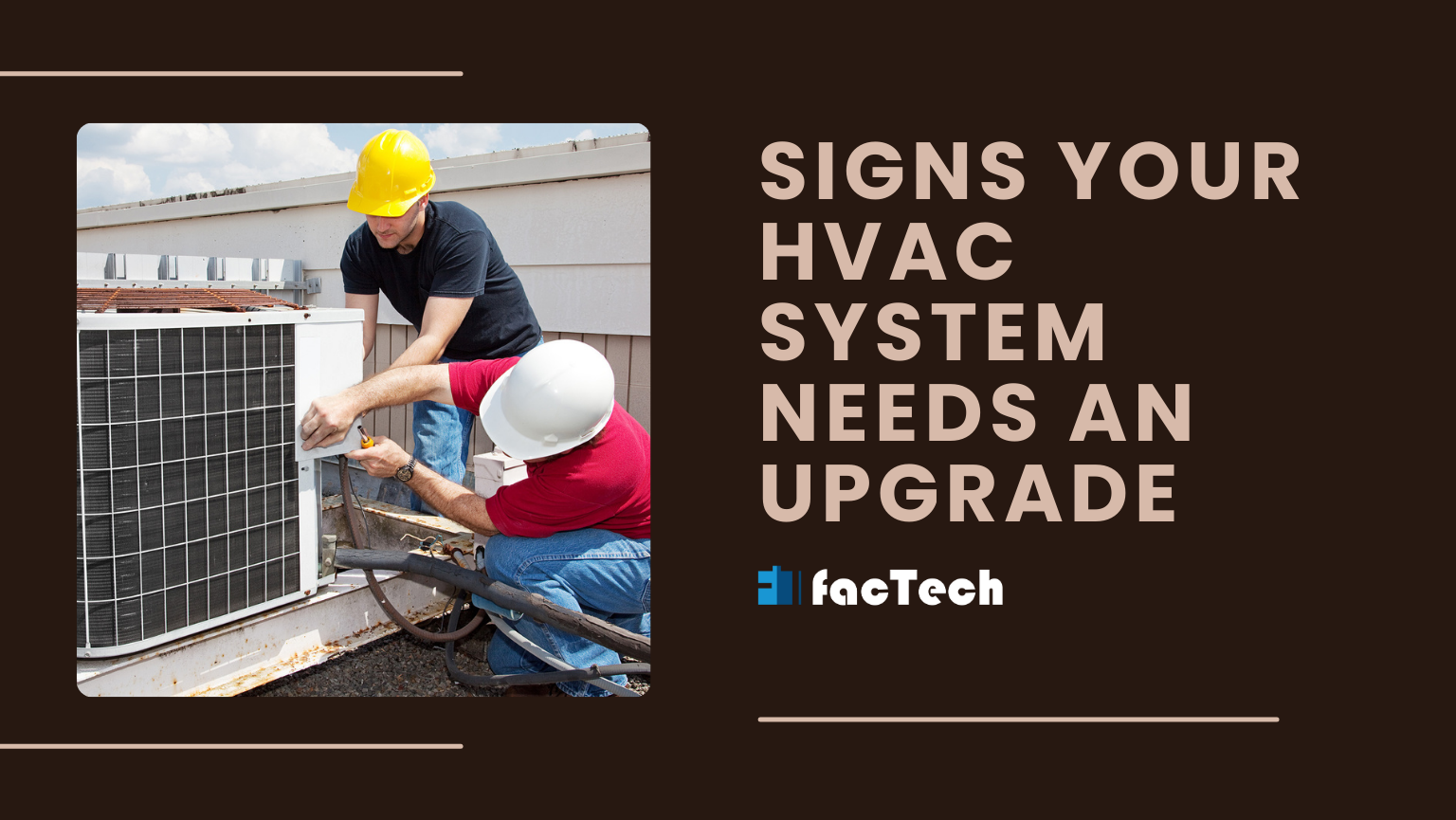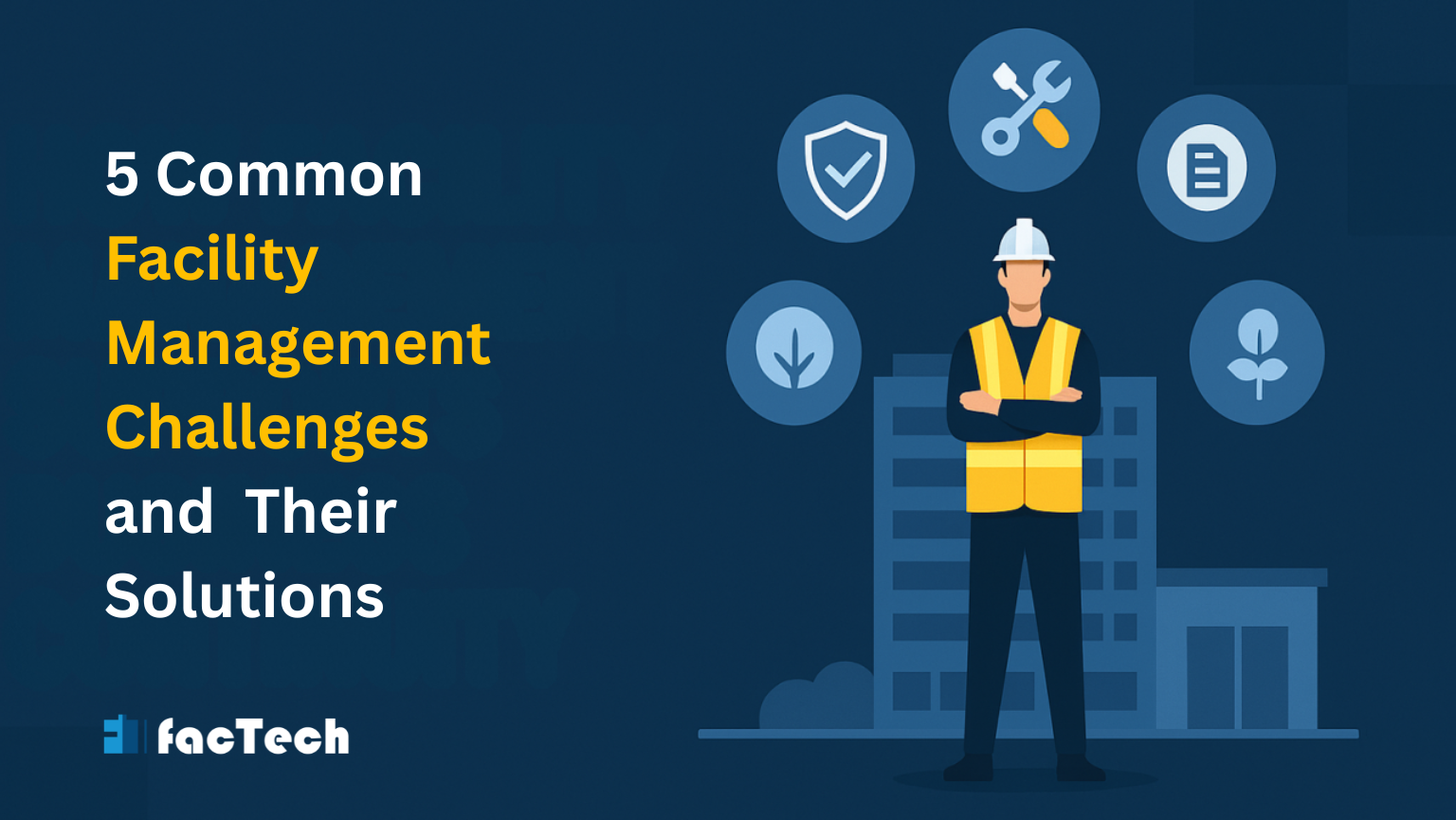Reduce HVAC Carbon Footprint with Preventive Maintenance
As environmental awareness develops, carbon footprints have become a major issue for companies in many different sectors. Particularly because of their energy-intensive operations, HVAC systems play a major role in commercial buildings, contributing significantly to greenhouse gas emissions. Using advanced HVAC preventive maintenance systems provided by Factech can help building owners and developers significantly lower their environmental footprint while simultaneously increasing operational effectiveness. Here is a closer examination of how an HVAC system helps to reduce the carbon footprint of a building.

Building Carbon Footprints
The carbon footprint of a structure is the whole greenhouse gas emissions produced throughout its building, running, and ultimate demolition. Because they run on electricity, natural gas, and other energy sources, HVAC systems contribute significantly to many of these pollutants. HVAC systems in business buildings sometimes account for 40–60% of all the energy consumed. This makes them a top focus for pollution reductions and efficiency gains.

Strategies to Reduce HVAC Carbon Footprint with Preventive Maintenance
Frequent Maintenance and System Optimization
Energy economy and best performance depend on regular HVAC system maintenance and optimization. Plan regular inspections, cleanings, and tune-ups to ensure your system runs as it should. To optimize energy savings, routinely replace air filters, check refrigerant levels, and calibrate thermostats. Addressing early maintenance requirements can help you to avoid any problems, cut energy waste, and lower carbon emissions.
Energy-Efficient HVAC Systems
Starting with energy-efficient HVAC systems is a basic way to lower carbon emissions. Energy efficiency can be much improved by upgrading your present system to one using cutting-edge technology such as geothermal heat pumps, high-efficiency heat pumps, or variable refrigerant flow (VRF) systems. These systems maximize heating and cooling techniques, conserving a lot of energy and lowering the carbon impact.
Building Automation Systems with Smart HVAC Controls
Using building automation technologies and smart HVAC controls will transform commercial building energy management. Among several building systems, including HVAC, lighting, and security, these sophisticated technologies offer centralized management over Leveraging sensors, data analytics, and sophisticated algorithms, these systems maximize energy use depending on occupancy patterns and environmental circumstances. Significant energy savings, higher degrees of comfort, and a lower carbon footprint follow from this.
Zoning Techniques and Occupancy Sensors
Effective ways to cut energy waste and lower the HVAC carbon footprint are including zoning techniques and integrating occupancy sensors. Occupancy sensors ensure energy is only used as needed by detecting activity inside designated building areas and adjusting HVAC settings. By separating the construction into several sections with autonomous temperature management, zoning techniques let you maximize heating and cooling depending on occupancy and use patterns. Targeting conditioned air to where it is needed will help you to save significant energy and assist the environment.
Observing and Analyzing Data
Using a sophisticated energy monitoring and data analysis system can help you to better understand the performance and energy consumption trends of your HVAC system. Gathering and evaluating data on energy consumption can help you to find areas for development, spot anomalies, and guide data-driven decisions to maximize energy economy. By aggressively addressing energy inefficiencies, real-time monitoring and analysis help you to greatly lower carbon emissions.
Integration of Renewable Energy Sources
Reducing the carbon footprint of business buildings depends critically on accepting renewable energy sources. To create on-site, renewable energy, think about including geothermal systems, wind turbines, or solar panels. These renewable energy sources can help your HVAC systems meet their energy needs, therefore lessening your dependence on fossil fuels and hence reduce carbon emissions. You can also investigate chances for feed-in tariff programs or net metering, which will let you sell extra solar power back onto the grid.
Constant Review and Constant Enhancement
Reducing the HVAC carbon footprint calls for both constant examination and development. Track carbon emissions, check energy use, and routinely evaluate the success of your environmental projects. Point out regions that call for more development, then act in line with extra steps. By always seeking improvement and adopting creative ideas, you may keep raising the environmental performance of your business building.

Advantages of Reducing HVAC Carbon Footprint
1. Cut Running Expenses:
Reduced power consumption of energy-efficient technologies results in cheaper utility rates. The initial outlay in modern HVAC equipment can be offset over time by savings.
2. Improved Occupant Comfort:
Modern HVAC systems enhance the whole indoor experience by offering constant temperatures, better air quality, and quieter running performance.
3. Enhanced Real Estate Value:
Tenant and buyer attraction to buildings with sustainable HVAC systems is higher. Their commercial appeal is further enhanced by their qualifying for green certifications.
4. Participation in Environmental Objectives:
Low-carbon HVAC systems promote world sustainability projects and help to slow down climate change by lowering carbon emissions.
5. Regulatory Compliance
Local authorities and governments all around are pushing energy efficiency and emissions cuts. Modernizing to effective HVAC systems guarantees compliance and helps to prevent fines.
How does the Factech HVAC Preventive Maintenance System Help in Reducing Carbon Footprint?
By turning reactive maintenance into a proactive, data-driven strategy, the Factech HVAC Preventive Maintenance System uses innovative technologies to greatly lower HVAC carbon footprint. By means of real-time performance monitoring, predictive analytics, and automatic scheduling, it guarantees HVAC systems run at maximum efficiency, therefore reducing energy waste from unclean coils, clogged filters, and malfunctioning components. This not only increases the lifetime of equipment, so lessening the environmental impact of production and disposal, but it also helps find and seal energy-losing duct leaks and maximize refrigerant levels, so directly lowering energy usage and a smaller carbon footprint for buildings.
The bottom line
Commercial facilities trying to lower their carbon footprint must first embrace smart HVAC systems and preventative maintenance. Building owners may save a lot of energy, improve tenant comfort, and help much with global sustainability initiatives by giving efficiency top priority, using smart technologies, and always improving systems.
FAQs
Q1: How much energy might preventive maintenance save?
Depending on the starting condition of the system, regular preventive maintenance can cut HVAC energy use by 5–15% or more.
Q2: What is the primary benefit of smart HVAC controls?
By changing heating and cooling depending on real-time data, smart HVAC controls maximize energy use, therefore saving a lot of energy and lowering emissions.
Q3: Does switching to energy-efficient HVAC systems give any benefit?
Indeed, even if there is a first outlay, the long-term savings on energy bills and lower maintenance expenses usually show a good return on investment.
Q4: How does Factech help with carbon footprint reduction?
Factech’s technology guarantees ideal HVAC performance by means of real-time monitoring and predictive analytics, so minimizing energy waste and increasing equipment lifetime, so lowering the carbon footprint.











